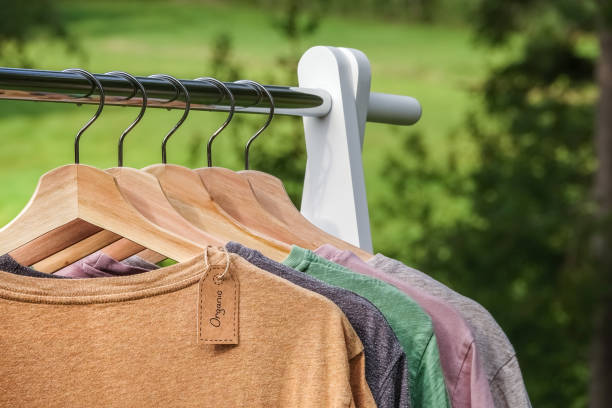As technology continues to evolve, so does the fashion industry. Sustainable living and fashion are increasingly intertwined with the rise of eco-friendly fabrics that revolutionize people’s wardrobes. Eco-warrior Vikki Gerrard La Crosse WI points out that smart consumers care about how their clothing is produced in addition to its aesthetic value, leading to an evolution in eco-friendly fabric options for all types of wardrobe choices.

From vegan leather alternatives to wooden fiber textiles, there is no shortage of options for those who want environmentally-conscious pieces in their repertoire without sacrificing style or comfort. Let’s look at four eco-friendly fabrics shaking up the fashion world – read on if you’d like insight into this green revolution!
Introducing Eco-Friendly Fabrics
As consumers become environmentally aware, the fashion industry responds by introducing eco-friendly or green fabrics. These fabrics are made from sustainable materials and are produced using ecologically sound processes. In addition to being better for the planet, eco-friendly fabrics offer many benefits for consumers.
They are soft, breathable, and durable, perfect for everyday wear. And because they are made without harmful chemicals, they are less likely to cause skin irritation and other health issues. You can prevent environmental degradation by choosing eco-friendly fabrics while enjoying stylish, comfortable clothing.
Why Traditional Fabrics Aren’t Sustainable
Traditional fabrics, such as cotton, wool, and silk, have been widely used in the fashion industry for centuries. However, as the world becomes more educated, people recognize these fabrics are unsustainable. Conventional cotton, for example, requires vast amounts of water, pesticides, and fertilizers to grow, adversely impacting the environment and human health.
Wool and silk require huge amounts of energy to produce and use harmful chemicals in manufacturing. As responsible consumers, looking for alternatives to these traditional fabrics means contributing to a brighter future.
Sustainable Fabrics
Fortunately, many innovative materials are available to reduce the negative impact of the fashion industry on the planet. Take a look at them below:
Hemp Fabric
Hemp fabric is becoming increasingly popular as people search for better alternatives to traditional cotton and synthetic materials. Unlike these options, hemp is extremely eco-friendly, requiring little water and pesticides. Its natural fibers are incredibly durable and long-lasting, meaning hemp clothing and other products can withstand wear and tear much better than other materials.
Staunch environmentalist Vikki Gerrard La Crosse WI points out that not only is hemp a greener choice, but it is also incredibly versatile. It can be used in various ways, from clothing to paper to building materials. As more and more people prioritize sustainability, hemp fabric is poised to play a major role in creating a more environmentally-conscious future.
Bamboo
Bamboo has become a popular alternative to traditional fabrics due to its soft and breathable properties. Its fibers are naturally smooth and round, providing comfort to the skin and allowing proper air circulation. This makes bamboo especially suitable for warm, humid climates. Additionally, bamboo is known for its moisture-wicking abilities, drawing sweat and moisture away from the body to keep it dry and comfortable.
What’s more, bamboo is incredibly sustainable and eco-friendly, as it can grow up to three feet in just one day and doesn’t require harmful pesticides or fertilizers. All in all, bamboo is a comfortable and responsible choice for those looking for an alternative to traditional fabrics.
Organic Cotton
Organic cotton, a true marvel of sustainability, is cultivated without chemical fertilizers or pesticides, showcasing a commitment to a healthier planet. Its remarkable breathability ensures a comfortable and fresh feel, setting it apart from conventional cotton.
Moreover, its softness is unparalleled, cocooning you in a gentle embrace that feels like a luxurious treat for your skin. By opting for organic cotton, you not only pamper yourself but also contribute to a greener world, positively impacting the environment. Embrace this eco-friendly choice to enjoy the sheer beauty of nature while prioritizing your well-being and the well-being of our planet.
Tencel
As people become more aware of their environmental impact, they find new ways to reduce carbon footprints. One such solution is Tencel. Unlike other synthetic textiles, Tencel is made of natural materials, primarily eucalyptus wood pulp. The manufacturing process for Tencel requires significantly less water and chemicals than traditional textiles, reducing its environmental impact.
Additionally, as a plant-derivative fiber, Tencel is biodegradable and compostable, making it a sustainable solution for both production and waste management. By using Tencel in clothing, bedding, and other household items, consumers can take a step towards eco-living while benefiting from high-quality products.
Recycled Polyester
Recycled polyester is a more feasible alternative to traditional polyester since it is made from recycled plastic bottles and other waste materials. By patronizing products made of this innovative material, you can significantly reduce your waste footprint, a critical step towards a greener tomorrow. Recycled polyester has many benefits, including reduced energy consumption, lower carbon emissions, and less waste generated during manufacturing.
Additionally, recycled polyester can be just as durable and high-quality as traditional polyester, making it an excellent choice for a range of applications, from clothing to home textiles. Adding recycled polyester to your wardrobe means taking meaningful steps to reduce your environmental impact and creating a better future for yourself, your loved ones, and the planet.
Final Thoughts
Eco-friendly fabrics are revolutionizing the fashion industry for the better. Hemp, bamboo, and organic cotton fabrics provide a natural alternative to traditional fiber production, while Tencel and recycled polyester will help tackle the current waste problem. Switching to these sustainable fabrics significantly reduces your environmental impact while slaying your OOTD (outfit of the day).
Remember, this is an amazing opportunity to make a difference within your current practices. Use the knowledge, make lifestyle changes, and inspire others to do the same. Every movement starts small, but if everyone comes together, the world gradually moves closer and closer toward a wonderfully Earth-friendly future.
Published by HOLR Magazine.


